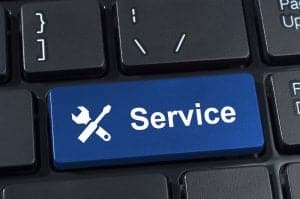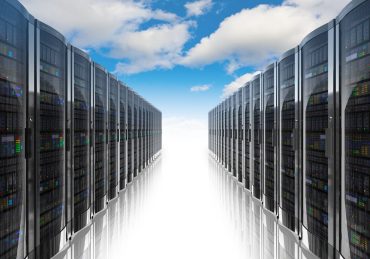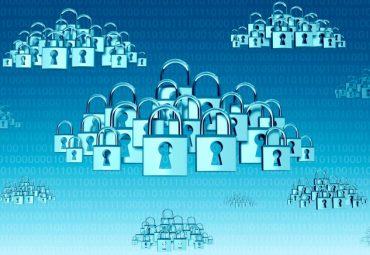
Companies are turning to remote service and condition monitoring to cut costs, make more efficient use of service staff, and vastly improve the operations of their equipment in the field.
Equipment manufacturers today must differentiate their offerings on performance and reliability. Frequently the key to both is service. However, scaling up service efforts can be labor-intensive and expensive. Increasingly, companies are turning to remote service and condition monitoring to cut costs, make more efficient use of service staff, and vastly improve the operations of their equipment in the field.
RTInsights recently sat down with Fernando Martinez Calderon, MindSphere Industry Solutions Manager at Siemens. We discussed the pain points of monitoring and servicing equipment and how IoT solutions that include remote condition monitoring and remote service offerings can substantially help. Specifically, we discussed MindSphere®, Siemens’ industrial IoT as a service solution. Here is a summary of our conversation.
RTInsights: What benefits do companies derive using an industrial IoT solution, such as MindSphere, for remote condition monitoring and remote service?
Martinez Calderon: There are ample benefits, and they become stronger when you implement the right type of solutions. For example, let’s take a look at some of the capabilities of the MindSphere Asset Health and Service Hub solution, which enables remote condition monitoring and remote service, and so much more. A manufacturer or OEM can have full, continuous transparency into the condition of a piece of equipment. The raw data that’s collected can be monitored and analyzed at the edge for critical processes and then sent to the cloud for further analysis and processing. With the ability to do edge analytics, sensitive data remains onsite; further, it is possible to define which pieces of data are sent to the cloud as well as their granularity and frequency. For example, the average value of certain signals every hour or perhaps only in the case that a certain trigger is detected.
This edge-to-cloud combination gives service providers a real understanding of how the machine is operating while protecting the privacy of their customers. But ultimately, the underlying value is catching anomalies at an early stage before they become real problems.
Such capabilities are becoming increasingly critical. For years, equipment manufacturers mostly focused on selling their machines and considered service as a secondary item to be offered. That was fine until competition from lower-price providers started to emerge, especially from Asian countries. Merely selling machines alone is no longer profitable – service has become a differentiating factor.
To effectively compete with low-cost providers and stay ahead in the feature/function war, manufacturers need to make sure that their machines are always running and are the most reliable. They need to guarantee that their machines can have the highest throughput and fewest problems.
Now, some machine builders earn up to half of their profits through service contracts. However, providing stellar service can be expensive, especially for companies that go it alone. But with Siemens’ solution, a manufacturer or machine OEM can align its interests effectively. This helps them deliver much better service without increasing costs – or even in some cases, they reduce costs. A common measure of effectiveness in this area is the KPI called the cost-per-service case. The MindSphere Asset Health and Service Hub can reduce that KPI.
To do this, the solution helps to eliminate emergency cases, which are the costliest. Manufacturers and machine OEMs have the ability to identify – through the data collected – whenever an anomaly is taking place and address it before it becomes a bigger problem. This is different from conventional condition monitoring, which requires experts to travel to their customers and perform a machine health analysis once or twice a year.
Using the solution, manufacturers and machine OEMs get continuous monitoring without sending somebody onsite. This is step number one. Additionally, the solution not only monitors “slow” signals, like pressure and temperature, but it also monitors the vibrations of the machines. By measuring the vibrations and other critical parameters, a manufacturer or machine OEM can detect issues months in advance.
For the remote condition monitoring capabilities, the solution uses the MindConnect Edge Analytics system. With it, an OEM is able to detect and analyze anomalies before they are real problems and can sometimes fix those problems remotely.
In some cases, such as when hardware needs to be replaced, a site visit is still necessary. But in these cases, that site visit can be more productive. Knowing the situation, a technician with the right skills – and equipped with the right parts – can be dispatched for service. They know what the problem is and can fix it right away.
RTInsights: You talked a lot about remote condition monitoring; what about the remote servicing capabilities?
Martinez Calderon: The second major part of the Asset Health and Service Hub solution is remote service, which can be used to remotely analyze, repair, or at the least, undertake mitigation activities.
For example, suppose the remote condition monitoring system detects an anomaly of a machine. The service engineer needs to access the stored data of the machine to perform a comprehensive root cause analysis. This usually involves a service technician needing to be onsite. Once the issue is determined, a second visit is then needed to repair the machine or replace a component. As you can see, this requires multiple visits, which results in expensive travel times and prolonged standstill situations.
Using MindSphere remote service, service engineers can see the data and perform the first diagnosis remotely. This means that when an expert does travel to the machine, it’s the right person with the right tools and right parts the first time. Going further, depending on the type of problem, the entire repair may be able to be done remotely, eliminating the need for an onsite visit.
Together, these remote condition monitoring and remote service capabilities make the Asset Health and Service Hub solution very powerful. The combination allows the machine users to nearly eliminate standstills or emergency situations. Of course, there will always be some service and maintenance happening, but at least it’s plannable, and the resources of the service team are expended more wisely.
RTInsights: What pain points do these solutions address?
Martinez Calderon: The top pain points are unplanned standstills as well as increasing service costs.
The first, unplanned standstills, are often the result of a reactive maintenance approach. The problem with that approach is that when equipment breaks down, the service provider needs to be informed, then a service team must go onsite to analyze the problem. If it’s not a quick fix, they leave and return some days later with the right tools, the right colleague, and the right parts to fix the equipment. This reactive approach is how service is done for a lot of machinery, but it’s time-consuming, costly, and inefficient.
A slightly better approach is to be proactive. For critical machines, often a preventive maintenance approach is taken. Rather than waiting for something to break, service teams check machines by making onsite visits in fixed time periods (once a year, every six months, once a quarter, etc.). During these visits, they try to catch problems before they negatively impact production. However, problems can only be caught some of the time – there are still times when this approach slips up.
For example, suppose regularly scheduled service for a certain machine is set for the Christmas break when things are slow. What happens if a problem occurs in November? Now the service is reactive, potentially resulting in standstills, problems with the quality, or less production. Plus, this approach still requires that somebody is permanently traveling to check how the machines are doing.
A predictive approach, combined with remote service capabilities, is much more effective. This way, the service teams travel much less and are able to react in a more prompt and better-organized way. This is the approach offered by the MindSphere Asset Health and Service Hub solution from Siemens.
RTInsights: Can you talk about this difference between predictive and proactive/reactive maintenance a bit more?
Martinez Calderon: To understand why this is so important, just look at how service is being done. Usually, the only information a service provider gets is a telephone call from a customer saying there is a problem – a machine has stopped working. Although they try to explain how it happened, these kinds of descriptions are not very useful. Plus, they are based on the opinion/observations of the customer and not on real equipment data.
The company then sends a technician onsite, but they are often going in unprepared, more as a detective to find out, “What’s the problem with this machine? Why did it break?” During this visit, they may not have the right tools, the right spare parts, and sometimes not even the right skill set.
With the Siemens MindSphere solution, manufacturers and machine OEMs can conduct this first predictive analysis from a remote location, based on data and facts, and prior to a full machine breakdown. If the sensors indicate anomalies, the detective work starts at that first indication. They can analyze that data and find the root cause of the problems without having to go onsite.
This is huge because it diminishes the amount of traveling. The solution allows the service team to organize and plan its work rather than operate in emergency mode. Or, if it’s not a hardware fix, they can remotely service the machine with software updates to fix those types of issues. This is much more user-friendly for the one who’s receiving the service because they get an immediate resolution and no travel expense.
RTInsights: To close, can you summarize the benefits of using the Siemens MindSphere solutions?
Martinez Calderon: Siemens introduced a single, integrated interface to put our systems together, which differentiates us a lot from our market competitors. Some have monitoring systems. Others have IoT platforms. And there are others that have remote services capabilities and apps or ticketing systems. Only Siemens has made the solutions connected and very user-friendly. Service teams are empowered to really focus on using knowledge to provide value to their customers.
We have remote condition monitoring systems running. If it identifies anomalies, it will trigger an event or an automatic alarm. It essentially raises its hand and says, “There’s something not okay with me.” Immediately and automatically, the integrated Asset Health and Service Hub solution creates a service ticket. The service ticket will go through ticket lifecycle management and stay open until the service provider resolves the problem and closes the ticket.
During the ticket lifecycle, everything that is happening is being logged in the ticket. That means a lot of protocoling processes that the service teams had to do are now taken care of automatically by our solution. Everything is being monitored. Everything is protocoled.
That is just the first step. Afterward, users can analyze those tickets and the service cases. They are able to say, “Okay, in the last year, what kind of service cases are occurring most of the time? Is there some systematic problem with the machine? Is something related to service being overlooked?”
This kind of long-term analysis is what companies really enjoy. The remote service dashboards provide insights into KPIs, like how long does a ticket generally stay open? How long does a certain machine stay in a healthy state? How often does it have tickets? Is there some periodicity of the tickets? By analyzing these service cases, we’re able to deliver all types of insights to equipment manufacturers and OEMs.
And since we are Siemens, we comply with the industry requirements for remote condition monitoring as well as for remote service. We are using these systems in our own factories, which are some of the biggest and most advanced factories in the world. These solutions work very well and add a lot of value. We’re bringing all this experience, all this knowledge to the outside world, because we think it’s a win-win situation for everybody.






